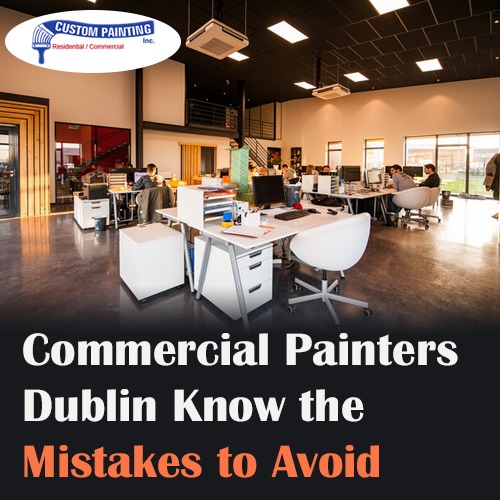Commercial painters in Dublin, CA know that the appearance of any business is often a customer’s first impression. A business’s appearance is almost always a reflection of the owner and how he or she runs it. If the exterior or interior walls have faded paint or peeling or cracked surface, or if the colors are outdated, customers may think that the owners don’t care enough to present a clean, decent, and updated front.
As a business owner, appearances are a natural concern, but you also want to save money. You may do the paint job yourself or call in a friend or family member to do that. Or hire a cheap painter. But with a lack of experience, you may run the risk of putting your business into jeopardy.
Before making your decision, you need to know the trade-offs of going the DIY way (or hiring a cheap painter) versus hiring a professional. Commercial painters have so much experience to understand the mistakes, and thus, avoid them.
1. Not protecting the area
Painting involves a lot more work than just dabbing the area with paint. When you’re painting a business, office, or commercial facility, you probably want your business to remain open. It means that painting will be done in sections or one room or area at a time.
Since your business will remain open to your employees and customers, you’ll have to minimize disruption during the paint job. Block off the area to avoid noise and fumes. Put a sign “Caution: Painting in Progress” to let your customers and employees know about the ongoing paint job. You have to move furnishings and décor out of the paint area. For items that cannot be moved, such as heavy machinery, you have to cover them with drop cloths or tarps so paint won’t get on them. Canvas drop cloths are better than plastic covers, as the latter can be slippery and cause accidents.
Remove switch covers and electrical outlets. Tape off any baseboards, trim, and any hardware installation that will not be painted. Commercial painters use only painter’s tape – not duct tape, masking tape, or any other tape.
2. Not preparing the surface
Some people are excited to go straight to the painting part right away that they do not bother preparing the surface. Always be reminded that preparing the surface is the key to an attractive and long-lasting paint finish.
If your surface practically looks in good shape, all it needs is simple cleaning with a wet, clean rag. But if your surface has some flaws and issues, they need to be addressed, or else the topcoat will have problems adhering to the surface.
If the old paint is peeling or flaking, scrape it off, and smoothen it out to make it even. If there are smaller cracks and holes, fill them with a spackling or patching compound. Let it dry, and then sand the excess off for a smoother and even finish. Larger holes may need drywall repair.
If the surface has heavy grease or oil residues, wash with TSP (trisodium phosphate) and rinse with warm water. If there is mold, mix a solution of one part bleach to three parts of water in a spray bottle. Spray to saturate the moldy area; if you’re doing this on interior walls, open the window or have a fan running as you spray the solution, as the bleach odor can irritate the nose and lungs.
After washing and cleaning the surface and letting it dry, don’t forget to prime it! A primer seals the surface, blocks stains, and enables more natural adhesion to the topcoat. It will make the finishing paint look solid and durable.
3. Using the wrong paint and materials
Reputable professional commercial painters will never cut corners by using cheap or inferior paints and materials. They know that the correct paint and tools are another secret to a great-looking and long-lasting paint finish.
Aside from selecting quality paints, commercial painters know one type of paint from another. For instance, if the painted surface is an oil-based paint, they will cover it with another oil-based paint. On the other hand, amateurs make the mistake of applying latex paint over the previous oil-based paint, which results in cracking and peeling.
There are times when it’s best to use a brush, while a roller works better in other instances. While a paint roller allows faster application and broader coverage, they can’t cut in corners and edges. For this reason, a paintbrush will do the job.
Commercial painters also know what type of paintbrush or roller to use for the kind of paint. For example, they use synthetic brushes for latex paint and brushes with natural bristles (made from animal hair) for oil-based paint.
For painting larger surfaces, commercial painters use a sprayer when painting.
Industrial painting is different as it is more bent to functionality and protection rather than aesthetics. Commercial painters who paint facilities or factories may also engage in industrial painting and use industrial paints. They are commonly composed of coatings such as epoxy, polyurethane, moisture care urethane, and fluoropolymer. It takes professional commercial painters in Dublin, CA to use the correct types of paints for specific surfaces.

